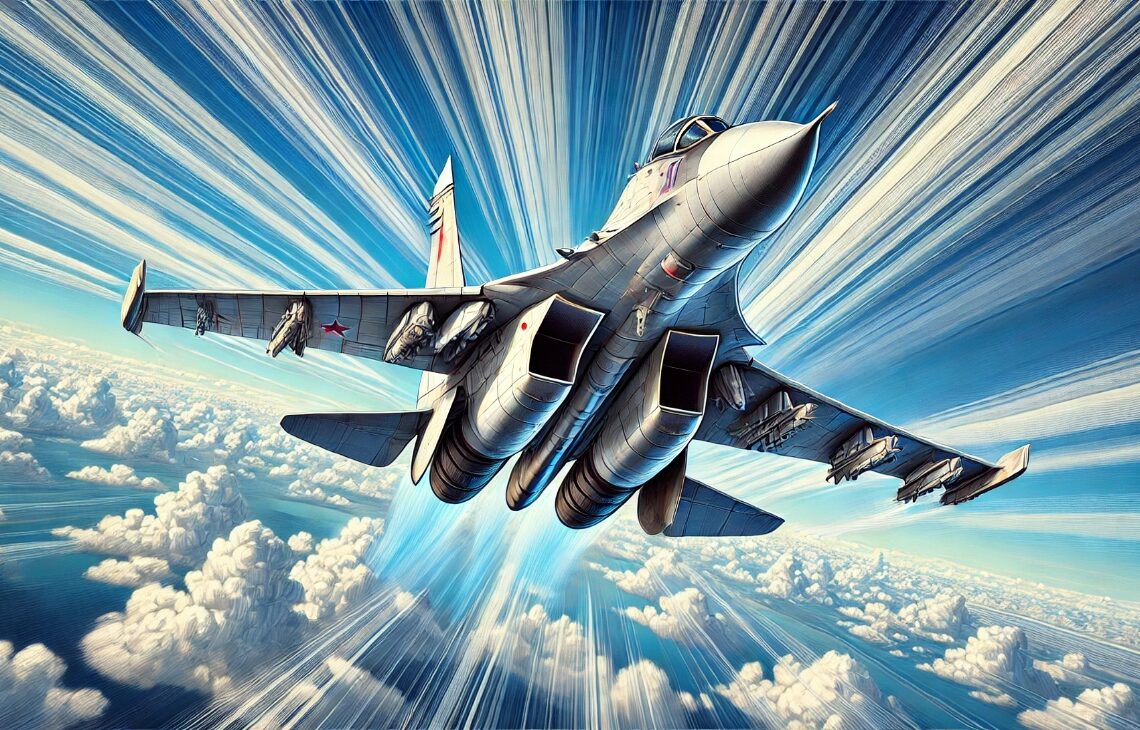Sukhoi Su-35: A Marvel of Aviation Technology
The Sukhoi Su-35, a remarkable fourth-generation multirole fighter jet, has garnered attention globally for its advanced features, combat capabilities, and technological prowess. This aircraft, produced by the Russian aerospace company Sukhoi, serves as a testament to modern engineering in the field of military aviation. Its development aimed to bridge the gap between earlier models and more advanced fifth-generation fighters, making it an essential component of modern air forces.
Development History and Design Objectives
The design and development of the Sukhoi Su-35 were influenced by the need for a high-performance aircraft capable of dominating air battles and performing versatile combat missions. Initially, the Su-35 project began as an upgraded variant of the Su-27 Flanker, one of the most successful Soviet fighter jets. However, with advancements in technology and combat requirements. It evolved into a sophisticated platform that incorporated cutting-edge avionics and flight systems.
The main design objective was to enhance the aircraft’s maneuverability, radar capabilities, and combat range. Engineers focused on reducing its radar cross-section while maintaining exceptional aerodynamic performance. The result was a formidable fighter jet that could compete with top-tier aircraft worldwide.
Aerodynamics and Airframe Features
The Sukhoi Su-35 boasts a sleek and modern airframe optimized for superior agility and speed. The aircraft’s design incorporates canard foreplanes, which contribute to its exceptional maneuverability. Additionally, the Su-35’s lightweight yet durable composite materials help reduce its overall weight while enhancing structural strength.
One of the jet’s standout features is its thrust-vectoring nozzles, which allow for unmatched maneuverability. This system enables the aircraft to perform complex aerial maneuvers, such as the “cobra” and “kulbit,” making it nearly impossible for adversaries to predict its movements during dogfights.
Avionics and Advanced Systems
The avionics suite of the Sukhoi Su-35 includes state-of-the-art radar and sensor systems designed to provide superior situational awareness and targeting capabilities. The Irbis-E radar, a phased-array system, allows the Su-35 to detect and track multiple targets simultaneously, even at long distances.
Advanced electronic warfare (EW) systems are integrated into the jet to protect it from enemy radar detection and missile threats. These systems, combined with high-resolution infrared search and track (IRST) sensors, enhance the Su-35’s ability to operate effectively in complex combat environments.
Weapons and Combat Capabilities
The Sukhoi Su-35 is equipped with a versatile arsenal of weapons, making it capable of engaging both air and ground targets. Its armament includes a combination of air-to-air missiles, air-to-ground missiles, guided bombs, and a powerful 30mm GSh-30-1 cannon for close-range combat.
This fighter jet’s ability to carry a wide range of munitions provides tactical flexibility in various combat scenarios. Additionally, its 12 hardpoints enable it to carry multiple weapons simultaneously, ensuring mission success even in high-intensity conflicts.
Performance and Engine Power
The Sukhoi Su-35 is powered by two Saturn AL-41F1S afterburning turbofan engines, which provide immense thrust and fuel efficiency. These engines are known for their reliability and contribute to the aircraft’s impressive speed and climb rate.
With a top speed of approximately Mach 2.25, the Su-35 can cover vast distances rapidly. Its operational range and in-flight refueling capability further enhance its endurance, making it suitable for long-range missions and strategic operations.
Operational Role and Global Deployment
The primary operational role of the Sukhoi Su-35 is to establish air superiority by neutralizing hostile aircraft and protecting friendly airspace. Its multirole capability also allows it to conduct ground-attack missions and reconnaissance operations when required.
Several nations have expressed interest in or acquired the Su-35 for their air forces, recognizing its strategic value. Countries such as China and Egypt have incorporated this fighter jet into their fleets, enhancing their defensive and offensive capabilities.
Technological Advancements and Global Comparison
Compared to other fighter jets in its category, the Sukhoi Su-35 stands out for its combination of advanced technology, maneuverability, and combat versatility. While it lacks some stealth features associated with fifth-generation aircraft, its superior aerodynamics and powerful sensors compensate for this shortcoming.
The integration of electronic warfare systems and thrust-vectoring technology gives the Su-35 a significant edge over many contemporary aircraft. When pitted against Western fighters such as the F-15EX and Eurofighter Typhoon. The Su-35 often demonstrates superior agility and comparable combat effectiveness.
Conclusion
The Sukhoi Su-35 remains a formidable asset in the realm of modern military aviation. Its development underscores the innovative spirit of the Sukhoi design bureau and Russia’s commitment to maintaining a competitive edge in air combat technology. With its advanced features, versatile combat capabilities, and global deployment, the Su-35 continues to shape the future of aerial warfare.


0 Comment